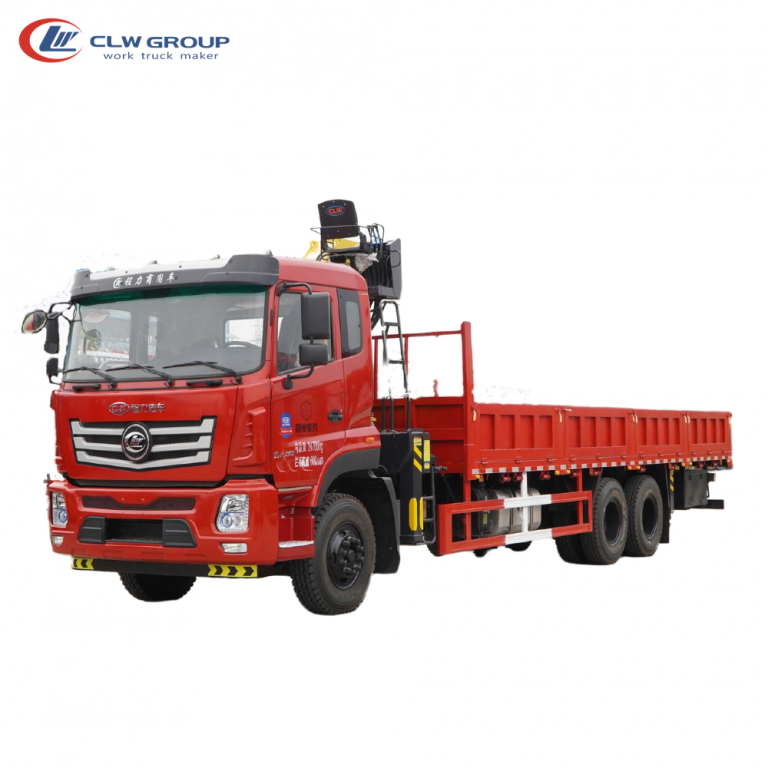Enhancing Maneuverability in Truck Mounted Cranes A Comprehensive Guide

Introduction:
Truck mounted cranes play a crucial role in various industries such as construction, logistics, and utilities by providing the ability to lift and move heavy loads with ease. One of the key factors that determine the efficiency and effectiveness of a truck mounted crane is its maneuverability. Enhanced maneuverability allows operators to navigate through tight spaces, work in challenging terrains, and improve overall productivity. In this comprehensive guide, we will explore the importance of maneuverability in truck mounted cranes and discuss various technologies and features that can enhance maneuverability in these versatile machines.
Importance of Maneuverability in Truck Mounted Cranes:
Maneuverability is a critical aspect of truck mounted cranes as it directly impacts the efficiency and safety of lifting operations. Improved maneuverability enables operators to access confined spaces, position the crane accurately, and navigate through obstacles with ease. In industries where space is limited and time is of the essence, maneuverability becomes a key factor in completing tasks efficiently and meeting project deadlines.
Enhanced maneuverability also contributes to the overall safety of crane operations. By allowing operators to position the crane precisely and avoid obstacles, maneuverability helps reduce the risk of accidents and injuries on the job site. Furthermore, improved boom truck enables operators to maintain better control over the load, minimizing the chances of accidents during lifting and transporting operations.
Technologies and Features for Enhancing Maneuverability:
1. All-Wheel Steering: All-wheel steering is a technology that allows the crane to steer using all wheels, providing enhanced maneuverability and improved control. By enabling the crane to turn in a tighter radius, all-wheel steering allows operators to navigate through narrow spaces and maneuver around obstacles with ease. This technology is particularly useful in urban areas or job sites with limited space where traditional steering systems may be restrictive.
2. Crab Steering: Crab steering is a feature that enables the crane to move diagonally, allowing it to traverse sideways without changing its orientation. This feature is especially useful in situations where the crane needs to be positioned precisely or when navigating through tight spaces. Crab steering provides operators with greater flexibility and control, making it easier to maneuver the crane in challenging environments.
3. Variable Outrigger Positioning: Many modern truck mounted cranes come equipped with variable outrigger positioning capabilities, allowing operators to adjust the outrigger extension and placement based on the terrain and space available. This feature enhances the crane's stability and maneuverability by providing optimal support and balance during lifting operations. By adjusting the outrigger position to suit the specific requirements of the job site, operators can maximize the crane's performance and efficiency.
4. Telescopic Boom Technology: Telescopic boom technology allows the crane to extend and retract the boom to reach different heights and distances. This feature enhances the crane's maneuverability by providing operators with greater reach and flexibility in positioning the load. Telescopic booms enable operators to access hard-to-reach areas and lift loads over obstacles, improving the overall efficiency of lifting operations.
5. Remote Control Systems: Remote control systems allow operators to control the crane from a distance, providing them with greater visibility and flexibility during lifting operations. By using a remote control device, operators can maneuver the crane more precisely and safely, especially in situations where visibility is limited or obstacles obstruct the operator's view. Remote control systems enhance the crane's maneuverability by giving operators the ability to position the crane accurately and navigate through challenging environments with ease.
6. Anti-Collision Systems: Anti-collision systems are advanced safety features that help prevent accidents by detecting obstacles and alerting operators to potential collisions. These systems use sensors and cameras to monitor the crane's surroundings and provide real-time feedback to the operator. By warning operators of obstacles in the crane's path, anti-collision systems enhance maneuverability by helping operators avoid accidents and navigate through congested job sites safely.
7. Automatic Levelling Systems: Automatic levelling systems are designed to ensure the crane remains stable and level during lifting operations, even on uneven or sloping terrain. These systems use sensors and hydraulic controls to adjust the crane's position and maintain stability while lifting and transporting loads. Automatic levelling systems enhance maneuverability by improving the crane's stability and control, allowing operators to work safely and efficiently in challenging environments.
Case Studies:
1. XYZ Construction Company: XYZ Construction Company recently invested in a truck mounted crane with advanced maneuverability features, including all-wheel steering and crab steering capabilities. By equipping their crane with these technologies, the company was able to improve productivity and efficiency on their job sites. The crane's ability to navigate through tight spaces and position loads accurately allowed XYZ Construction Company to complete projects ahead of schedule and with fewer accidents.
2. ABC Logistics Services: ABC Logistics Services upgraded their fleet of truck mounted cranes with remote control systems and anti-collision technology to enhance maneuverability and safety during lifting operations. The new features enabled their operators to control the cranes more precisely and avoid collisions with obstacles on the job site. As a result, ABC Logistics Services saw a significant reduction in accidents and downtime, leading to improved productivity and customer satisfaction.
Conclusion:
Enhancing maneuverability in truck mounted cranes is essential for improving efficiency, safety, and productivity in various industries. By incorporating advanced technologies and features such as all-wheel steering, crab steering, variable outrigger positioning, telescopic boom technology, remote control systems, anti-collision systems, and automatic levelling systems, operators can navigate through challenging environments with ease and precision. Investing in truck mounted cranes with enhanced maneuverability capabilities not only benefits the operators and businesses but also contributes to a safer and more productive work environment. As industries continue to evolve and demand more versatile lifting solutions, enhancing maneuverability in truck mounted cranes will remain a key focus for innovation and advancement in the construction, logistics, and utilities sectors.

